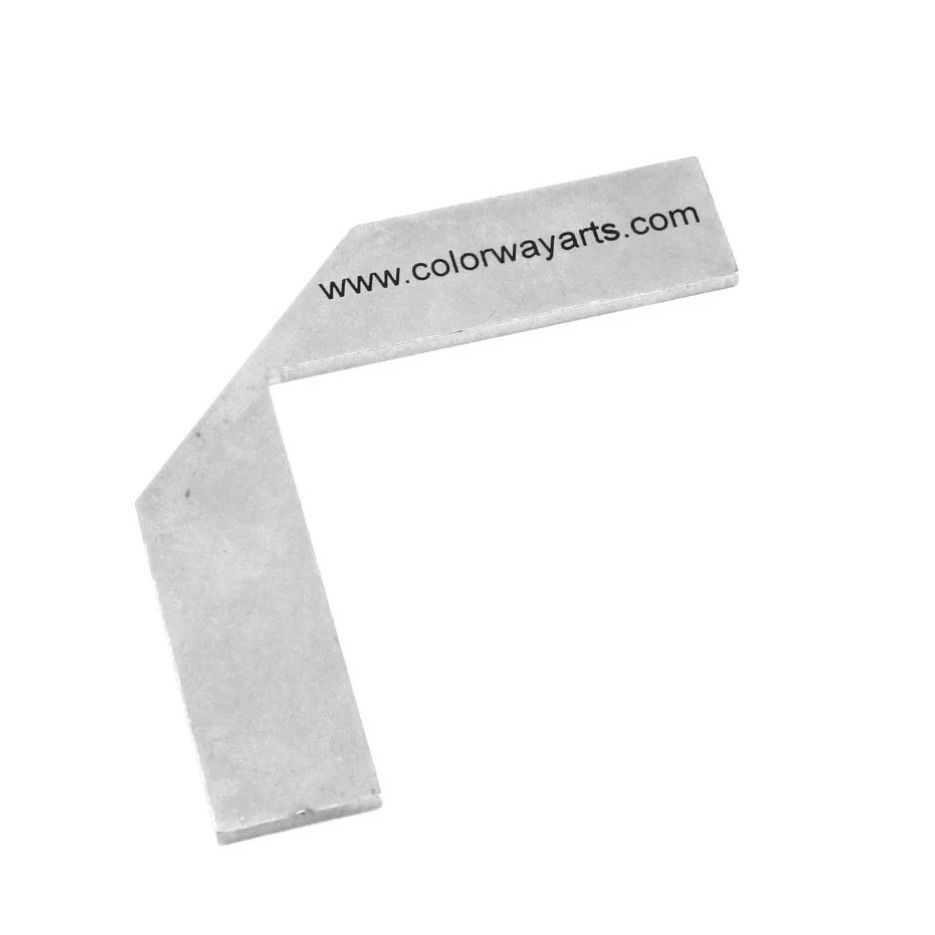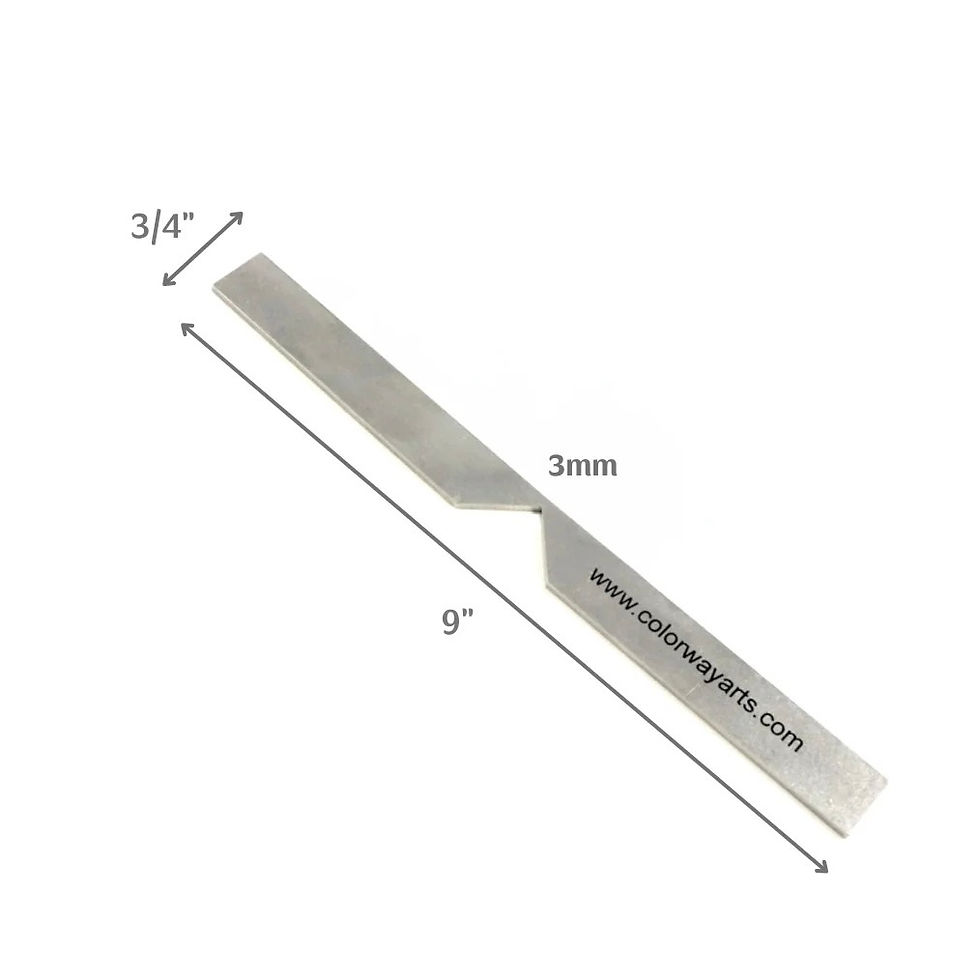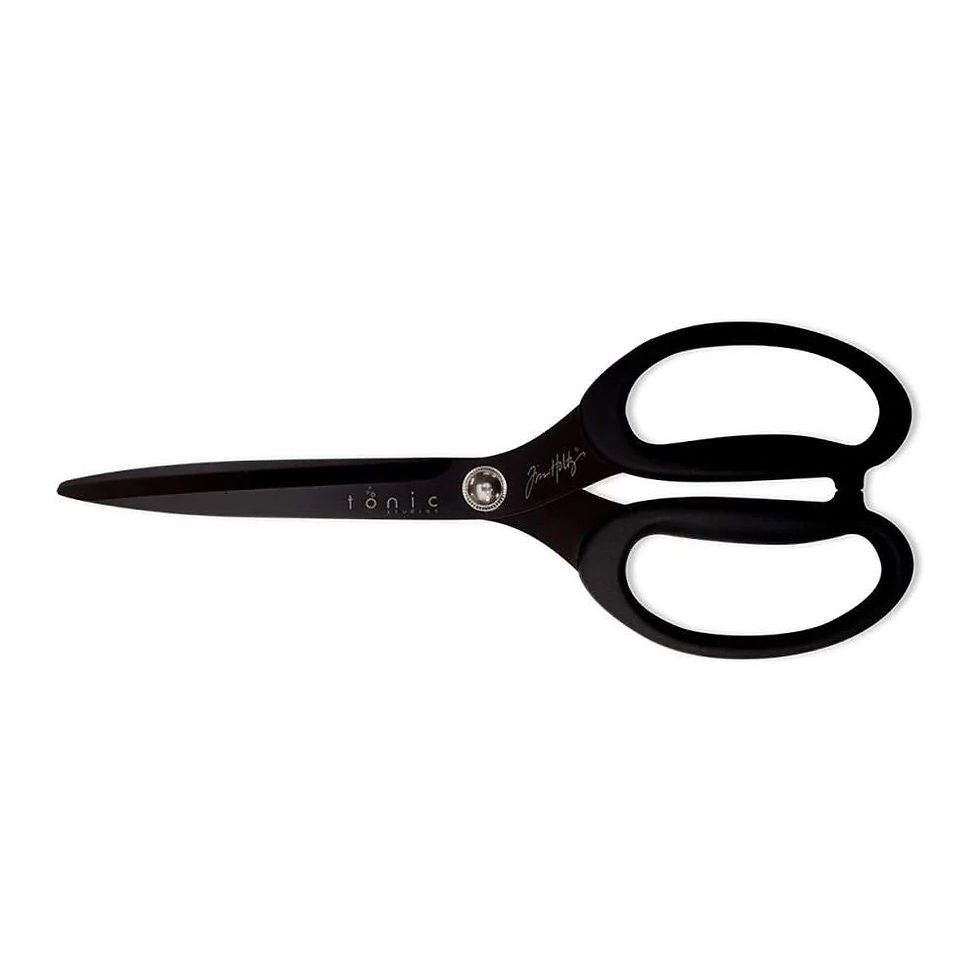8 Essential Tools I Use for Bookbinding and Handmade Art
- Melanie Grant

- Jul 31
- 4 min read
TRANQUIL • LUMINOUS • ROOTED
Stories from the studio, reflections on process, and the art of the handmade.
There’s something deeply satisfying about finding the right tool—something well-crafted, intuitive, and reliable. Over time, I’ve curated a set of studio tools that I reach for again and again. These aren’t just functional objects; they’ve become trusted companions in the rhythm of my creative process. Whether I’m binding a new book or immersed in collage and mark making, these tools offer the kind of precision and ease that lets the making flow.
You may have seen me rave in past posts about my HFS Guillotine Cutter or my Pastemate glue brush—both absolute game changers. But today, I want to highlight eight unsung heroes that live on my workbench and are a part of my bookbinding tools and let me tell they earn their keep daily.
1. Japanese Screw Punch For Bookbinding (Push Drill with 9 Bits)
Made of warm wood and elegant brass, this tool feels as beautiful in the hand as it is functional. Unlike a standard hole punch, the Japanese Screw Punch drills clean holes anywhere on a page—no edge limitations. With nine interchangeable bits (from 1mm to 5mm), it’s perfect for everything from delicate pages to thick binder’s board. Whether I’m prepping sewing stations for a new book or adding a detail to a mixed media piece, this punch makes the job feel almost effortless.
It’s important to note—not all screw punches are made equal. I bought mine from Talas, and while it was a bit of a splurge, it’s the kind of well-made tool you’ll use for a lifetime. The precision, the craftsmanship, the feel in the hand—it’s worth every penny.
Bonus? It’s handmade in Japan and spins with a satisfying, subtle whirl. A real joy to use. Here is where you can purchase it: Talas

2. Microspatula (Small but Mighty)
Don’t let the size fool you—this 6.5" microspatula is indispensable. I use it to apply glue into the tiniest corners, lift delicate papers, and press down flaps or repairs with just the right pressure. The thick handle gives it heft, and I’ve even used it for gentle scraping when needed. It’s one of those tools that seems to do everything and takes up next to no space. I got my spatula here: Hollanders

3. Corner Miter Tool for Bookbinding (Small Metal Version)
Precision corners can be surprisingly tricky. This stainless steel miter tool makes it easy to get crisp, consistent results when trimming corners for book covers, boxes, or albums. It’s quick, clean, and saves so much time—and frustration. I especially love using this when covering boards with fabric, where the margin for error is slim. You can find them here: Colorway Arts

4. Metal 2-in-1 Trim & Miter Tool
If the small corner tool is a trusty sidekick, this 9” version is the superhero. Made of stainless steel and built to last, it handles corners and trims excess fabric or paper like a dream. It even works as a ¾" spacer. Depending on the project, I often switch between this and the smaller miter tool—each has its charm. But for larger or layered projects, this one really shines. I call it my studio multitasker. This tool is also available from Colorway Arts.

5. Tonic Studios Titanium Scissors 9.5”
These are no ordinary scissors. The 9.5” snips glide through fabric and paper with clean, long cuts—perfect for straight lines and big swaths. The titanium blades resist adhesive buildup, and the serrated edge gives extra control. The comfort grip handles make long cutting sessions much easier on the hands.
I love that I can make one solid cut with a single squeeze—no jagged edges or awkward halfway snips. These are available form several online stores but you can see them here: Tim Holtz

6. Tim Holtz Mini Snips (7”)
For fine detail work, these are my go-to. Small, sharp, and super precise, these snips are wonderful for trimming thread ends, cutting collage shapes, or navigating tight corners. They’re comfortable to hold, and the blade cover makes them easy to toss into a tool pouch. They may be small, but they pack a mighty punch when it comes to accuracy. Here are the smaller snips: Tim Holtz

7. Teflon Folder (Large – 6.25”)
Once you try a Teflon folder, it’s hard to go back to bone. This sleek tool glides like a dream and won’t leave marks on delicate papers, book cloth, or leather. It has a pointed end for creasing and a wide, flat end for pressing—perfect for final folds, turn-ins, and cover work. At 6.25" long, it fits perfectly in the hand and offers just the right amount of control and resistance.
It’s the kind of tool you don’t realize you need—until you can’t live without it. You can purchase the Teflon Folder from Hollanders.

8. Teflon Burnisher (6.5”)
This slim and sturdy tool is a quiet powerhouse in the studio. At just 3/8" wide, it’s perfect for getting into tight corners—especially when I’m making books or working with small folded structures. Unlike metal tools, the Teflon won’t mar or shine delicate surfaces, making it ideal for use with fragile or handmade papers.
Whether I’m burnishing turn-ins or pressing paper into corners, this tool helps me finesse details without fear of damage. It’s one of those things that doesn’t look like much… until you try it. Then it never leaves your bench. This burnisher is also available from Hollanders.

Why Tools Matter
In the world of handmade, tools become extensions of our hands. The right tool can save time, reduce waste, and—perhaps most importantly—elevate the joy of the process. These eight have more than earned their space in my studio. If you’re looking to upgrade or fine-tune your own tool kit, I hope this list offers a helpful starting point.
Let’s Keep the Conversation Going
I’d love to know: What are your ride-or-die tools? Leave a comment and share your favorites—I’m always up for adding another gem to the collection. Leave a comment or connect with me on Instagram @melaniegrantdesign.
Curious about my art and creations that use these tools? Join my mailing list to see the finished pieces and get first access to new releases.



Comments